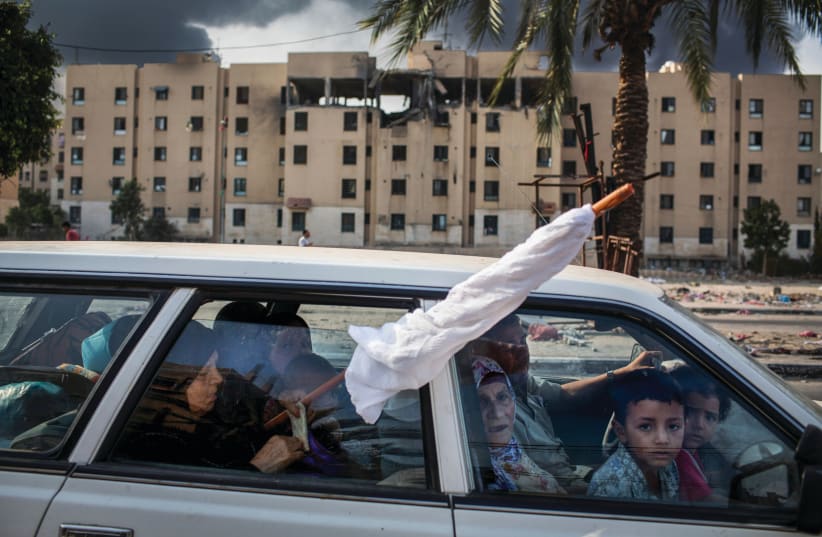Gaza is an Ireland/Canada co-production directed by two Irishmen, Garry Keane and Andrew McConnell. It’s their first feature.
McConnell, a photojournalist, grew up surfing on the west coast of Ireland. While living in Africa, he heard about a group of surfers in Gaza that was using equipment donated by an American man.
McConnell first visited Gaza in 2010 and returned in 2011, producing a photo essay about the surfers that was published widely.
In 2012, McConnell teamed up with documentary filmmaker Keane. Gaza was shot in 2014 and 2015, including during the period of Operation Protective Edge.
The filmmakers focused on subjects with a connection to the sea, including a family of fishermen and a 14-year-old boy from a refugee camp who spends much of his time in and around the water.
“We wanted to form a collection of people and let them tell their story,” says Keane. “We tried to stay away from editorializing as much as possible. The narrative comes from them. It doesn’t come from us.”
“The heart of this film is what it’s like to live in this extraordinary strip of land,” says McConnell. “Gaza is incredibly vibrant, colorful, and boisterous. It’s one of the most unique places I’ve ever been. Yes, it suffers when there’s conflict, but that’s such a small part of the story.”
“People have this picture of one big refugee camp, with everyone in temporary dwellings and NGOs feeding them,” says Keane. “We saw normal people with families trying to live, trying to feed their families, trying to maintain some semblance of normality.”
The film notes that Israel withdrew from Gaza in 2005 and that the strip has been run by Hamas since 2007. Hamas is considered to be a terrorist entity by many countries and organizations, including Israel, the United States and the European Union.
People in the film express hope that their lives will be improved by “reconciliation” between Hamas and its rival Palestinian party, Fatah.
“[Peace with Israel] is beyond their expectation. That’s not within their horizon,” says McConnell.
“The whole situation is so muddled up between Fatah and Hamas that they feel that if they can at least get that sorted, get some sort of equilibrium between those two, their boat will rise with that,” says Keane.
Some people in the film are openly critical of Hamas, but the filmmakers say that they never felt at risk while filming.
One figure shown in the film, actor and playwright Ali Abu Yaseen, was invited to Sundance and hoped to attend. However, he wasn’t cleared by Hamas to travel.
Many of the subjects speak about how life is “impossible” in Gaza – but those statements are juxtaposed with images of people running small businesses, taking taxi rides, going to the theater, organizing fashion shows, and taking cello lessons.
“It’s an attempt to show how resilient people are,” says Keane. “They try to do what they can to make life normal under extraordinary circumstances.”
“On the surface it may look normal, but that’s very much not the case,” says McConnell. “As you go through the film, you realize there’s tension and there’s always a feeling that something is coming. It may happen at any moment – and then at the end, it does.”
The film shows buildings destroyed by Israeli bombardments, as well as Gazan bombing victims. But it never shows rockets aimed at Israel from Gaza.
“We didn’t have that footage,” says McConnell. “During the war, rockets would go off from Gaza into Israel and we would see the smoke trails. But on film it’s difficult to tell what they were, if you didn’t have the actual rocket going up.
“If we had footage of rockets going from Gaza to Israel, we would have used it. We absolutely didn’t shy away from showing Hamas as the other belligerent in the conflict. Their military wing are seen with weaponry on the streets. Large swaths of the population are seen attending mass rallies and greeting the Hamas leadership.”
The film also never explains why Israel targeted Gaza.
“We believe the material facts of the conflict are regularly carried on mainstream news coverage around the world,” say the filmmakers. “We felt it was our job not to do that. We believe that most observers understand that the attacks coming from both quarters are part of a long-standing conflict between Israel and Hamas.
“For us the focus of the film was to capture the essence of the everyday lives as lived in this much-misunderstood, complex, and beautiful place.”
